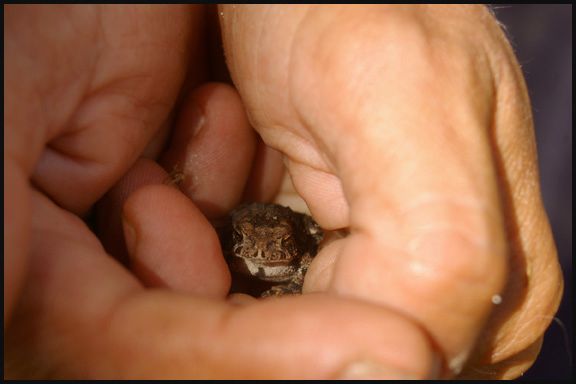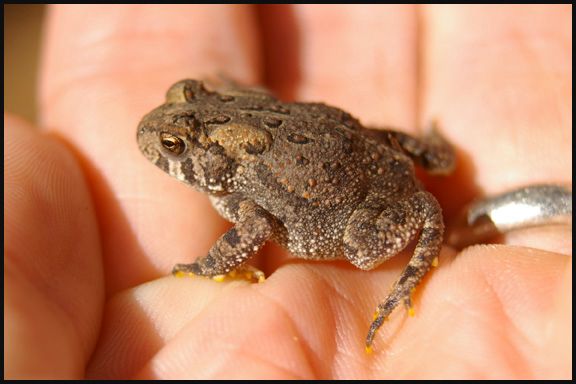100 Species #79: American toad

This little American toad was scooped up from the vegetable garden, right where we want him! (Or her.)
We were told by the man we bought the house from, that there are toads in the yard (and sometimes in the basement). We eagerly anticipated finding toads, and were delighted when one tiny one showed up in the veggie garden. As of this writing, Alexis has found three different toads in three different parts of the property.
American toads are found across eastern North America in a variety of habitats. Their main habitat requirements are shallow bodies of water in which to breed, and a source of insects and other invertebrates to eat. In our part of the world they also need some deep leaf litter or similar substrate to burrow in to survive the winter. Toads are unable to quickly escape predators, so rely on their camouflage and large poison glands to protect them. The milky white bufotoxin they exude under stress is bad-tasting (judging by the retching it inspired in my family's cairn terrier back when the family lived in Stafford and the dog frequently caught toads) but much less toxic than that of many other amphibians.
My boss recently informed me that the American toad was probably going to be moved out of genus Bufo. This made me much sadder than Pluto losing its planetary status. Bufo is the genus whose members are called "true toads," and includes the common European toad Bufo bufo. I feel sad that the American toad and the common toad may soon be separated with different genus names.
